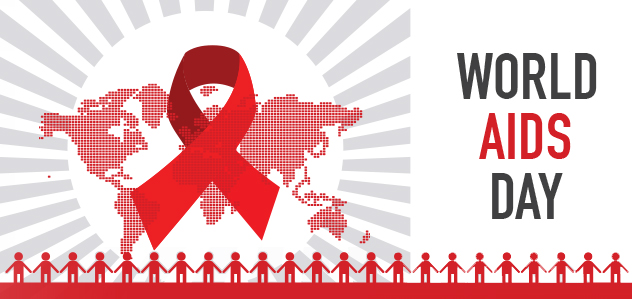World AIDS Day: December 1st
This is the final post from our fall intern Meghan Frisard, University of Maine student.
World AIDS Day happens annually on December 1st. It is an opportunity for people from around the world to show support for those living with HIV/AIDS and to raise money and awareness about this disease. Since 1984 when the AIDS virus was first discovered, over 34 million people have died as a result. Despite progress in prevention, treatment, and destigmatization in recent years, thousands of people are diagnosed with HIV/AIDS every year.

What is HIV/AIDS?
HIV (human immunodeficiency virus) is a virus that attacks a certain type of white blood cells that are known as T Cells (CD4 Cells). T Cells are the cells in our bodies that allow us to fight off infection and have immunity to diseases that we have had in the past. The HIV virus uses the mechanisms in these T cells to replicate itself, killing the T Cell in the process. Fewer T Cells means that a person’s body is less able to fight off infection. HIV is spread from certain bodily fluids, such as blood, semen, and vaginal fluid. HIV can also be passed from mother to child.
There are 3 stages of HIV Infection: Acute HIV infection, clinical latency, and AIDS. Acute HIV infection usually happens 2-4 weeks after a person is infected with the HIV virus and is characterized by terrible flu-like symptoms. Clinical latency is the period where a patient likely does not have any symptoms, but can still infect others. AIDS(acquired immunodeficiency syndrome) is the final stage of HIV infection. When HIV has killed enough T Cells that a person’s ‘T Count’ is under 200 cells per cubic millimeter of blood, the patient is diagnosed with AIDS. When a person has progressed to AIDS, they often develop opportunistic infections, which are diseases caused by viruses or bacteria that are rare in people with healthy immune systems. Examples of opportunistic infections are pneumonia, tuberculosis, and Salmonella infection.
Is there a cure for HIV/AIDS?
There is no cure for HIV/AIDS. However, Antiretroviral Therapy (ART) can be used to treat HIV. ART is a combination of multiple medicines, called antiretrovirals, that are taken together. ART is recommended to be started as soon as possible post-diagnosis and has been shown to greatly reduce the rate of disease progression. Before the invention of ART treatment for HIV, the clinical latency period would last an average of 10 years, and an opportunistic infection would cause the death of an AIDS patient. Now however, advances in ART allow most HIV patients to remain in the clinical latency period for many more years without ever progressing to AIDS, and the life expectancy of an HIV positive person becomes the same as a non-infected person if ART is started early.
In addition to ART, HIV-negative people can take Pre-exposure prophylaxis (PrEP) to reduce their risk of being infected with the virus. If taken daily, PrEP can reduce the risk of infection from having sex by more than 90%, and more than 70% from sharing needles. Anyone who may be at risk for infection is recommended to take PrEP; this includes anyone in a partnership with an HIV-positive person, anyone who may have sex with someone who is at a higher risk for infection (men who have sex with men, or IV drug users), and/or anyone who has used IV drugs or been in treatment for IV drug use in the last 6 months. PrEP is covered by many insurance plans, and can only be prescribed by a healthcare provider.
Mabel Wadsworth Center provides confidential and private HIV rapid testing. The Health Equity Alliance (HEAL) does a lot of work within the state of Maine regarding HIV and AIDS. HEAL is also holding a World AIDS Day event on December 1st in Pickering Square. Details are here.
Sources:
https://www.worldaidsday.org/about
https://www.hiv.gov/hiv-basics/overview/about-hiv-and-aids/what-are-hiv-and-aids
https://www.hiv.gov/hiv-basics/staying-in-hiv-care/hiv-treatment/hiv-treatment-overview
